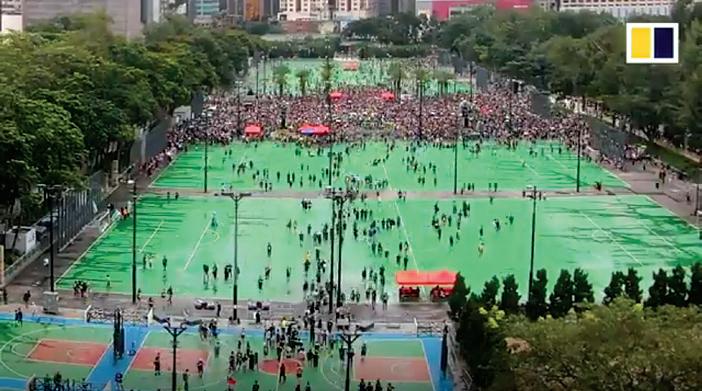
7 minute read
At the Foot of Lion Rock, Hong Kong
Joanne Lam
30 1997. 50. 2047.
Advertisement
These are the numbers that are written into the history books. They govern our lives, overwhelm our conversations and decide whether we stay or go. They sow uncertainty, regardless of our choice. They count down to the day when we have to change our identity, sealing our fates before we were born.
1997 came and went with ceremony and fanfare. For a brief moment, the world watched and applauded. We collectively let out a sigh of relief and pointed to the booming economy as evidence of the promised stability. 1997 jokes became obsolete. We pleasantly continued with life while counting down from 50. Dimsum topics revolve around food, shopping, stocks and property values. Though there were signs, we wrote them off as anomalies. They will blow over, we tell ourselves. We forge ahead. We try to forget the numbers. Under the seemingly clear sky, another year starts. We still have time.
2019 became a tale of two cities. ‘It was the best of times and it was the worst of times.’ As summer turns to winter, my city became unrecognisable. It is now headline news when it normally warrants no mention at all. Words from other places in conflict are now associated with my city. The images that are splattered on all screens are shocking, and surreal. Victoria Park was where I used to play. Glimpses of the jungle gym, the weekend balloon lady and seniors playing chess float in my head. Comparing these against images of the park being taken over for protests is jarring. The leisurely pace of the park is replaced with coordinated shouts and demands, even though the protest is peaceful. Long ago this was the site of a harbour for fishing boats, to keep them safe from the vicious wind of a typhoon. Since the land has been reclaimed, it has become a harbour of a different kind, a political one. In addition to recreation, it is also the site of the only memorial for the Tiananmen Square massacre in China. Perhaps there is no better place than Victoria Park to host the beginning of a new era for Hong Kong. It is indeed the best of times when there is hope.
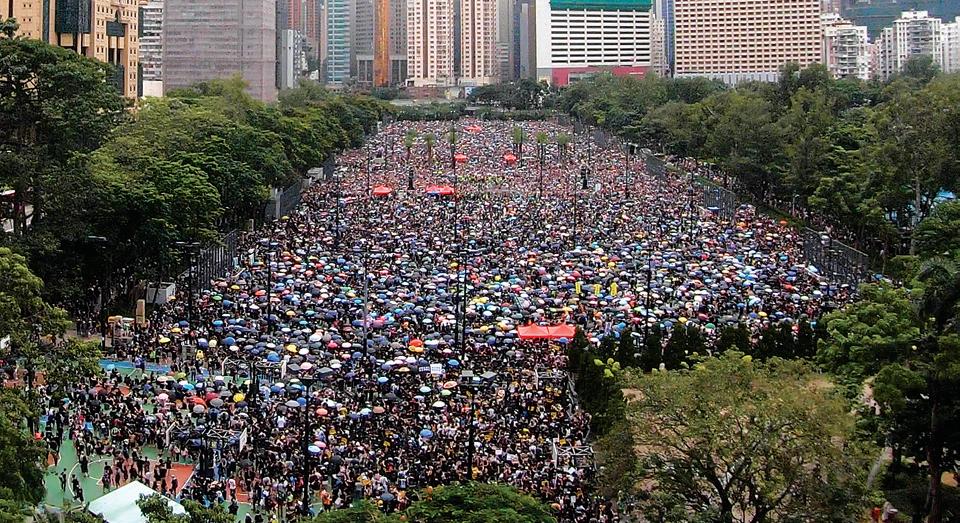
Victoria Park, Hong Kong
Thomas Yau / Bonnie Au
Causeway Bay is always packed and never stationary. Every hour, everyday. Everyone is always on the move. It is the ultimate area to live, work, play. I spent a lot of time in Causeway Bay, shopping, eating and generally getting lost in the maze-like streets that follow the rolling topography. There was always something to discover and rediscover. But this is a different kind of packed. It is not leisurely. Anger and tension ricochet off the buildings, underlined by a growing sense of worry. The police, known as ‘Asia’s Finest’, are supposed to keep order, but have somehow turned on the people. Suddenly, the urban maze becomes a key player. Are those narrow alleyways allowing the protesters to hide, to flee? Is the maze convoluted enough to confuse the police? Can the urban design handle life, work and protest?
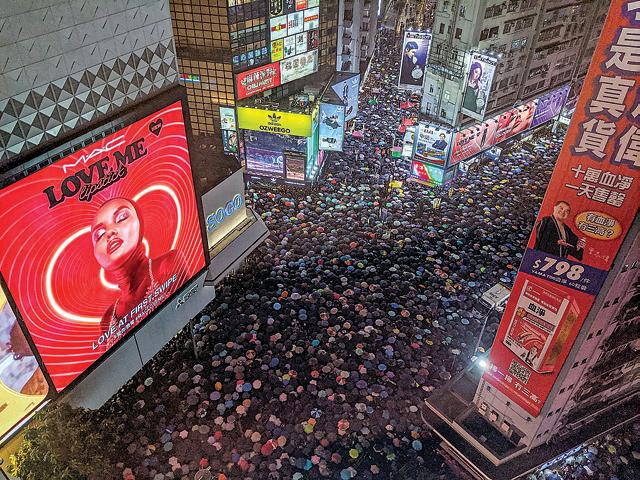
Causeway Bay, Hong Kong
Studio Incendo
The MTR has always been a source of pride. It is clean, efficient, orderly and serves as the prime mode of transportation for most residents. Every time I step on Hong Kong soil I put money on my octopus card and off I go. It has been the de facto escape hatch for the protests above but they now have spilt into the underground system, turning a mode of public transportation into the latest frontline. Disrupting the efficient network hits the city at its Achilles heel. Flimsy gates, subway train doors, turnstiles become meaningless. They are nothing against organised, angry, gang members who are ready with weapons to beat up protesters. They do nothing to protect those who need help, or who just happen to have been caught in the crossfire on their way home. The vast network becomes a container with blocked exits, inadvertently aiding one side, and used as a convenient excuse for the police who do not show up.
This is the opposite kind of efficiency.
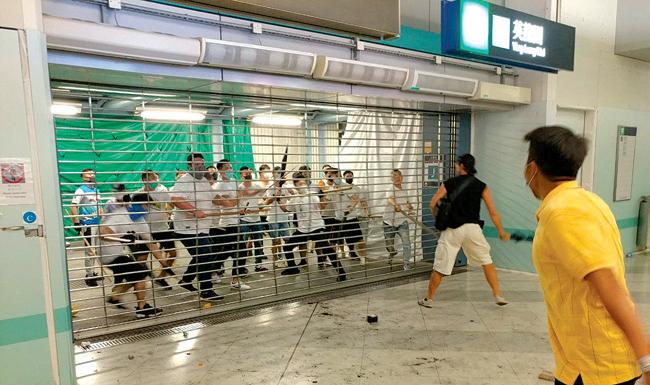
South China Morning Post
Of all the buildings in Hong Kong, the Space Museum is the only one that features as a beacon of hope in the protests. This building has always been my favourite, because of its instantly recognisable shape, but also because of what it contains. The world of wonder and possibility that the Space Museum presents and showcases blew my childhood mind. So it seems only fitting that the battle of the latest technologies takes place at its doorstep.
To confuse the police’ facial recognition cameras, the protesters adopt laser pointers. When the police deems the laser pointers to be an ‘offensive weapon’, the Space Museum shell is chosen as the unofficial testing ground. The result is a spontaneous laser show that tells off the police in a celebratory way. It is cheeky, ironic and poignant, a combination very unique to Hong Kong.
I have never seen the Space Museum more beautiful.
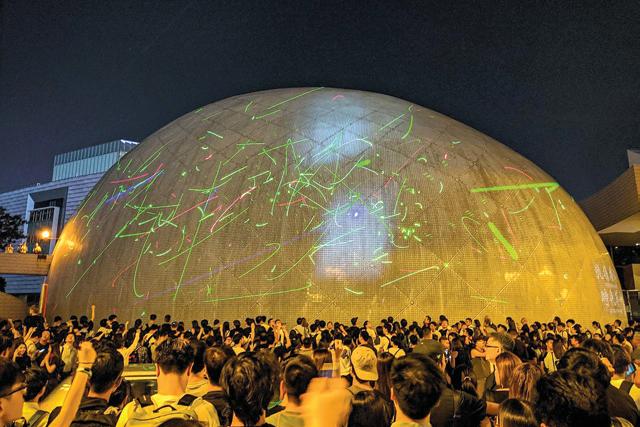
Space Museum, Hong Kong
Studio Incendo
When I was small, I knew Lion Rock because of the tunnel. It is nothing special, but the approach leaves an impression every time. As the outline of a lion, perched on the top of a mountain, comes into focus, it radiates stateliness and calm. It looks over the city, guarding it at all hours. Over the years, Lion rock has become a prominent anchor. For the older generation, its foothills provided their new beginnings after the civil war. The squatter houses from that time have since been replaced with tall apartment buildings, but a hit TV series and its theme song from that era still endure. The lyrics that cemented the fighting and together spirit of Hong Kongers ring true to this day, despite the evolving political and economical circumstances. So it is only natural that protesters go up to Lion Rock on the night of Mid-Autumn Festival, a day that is traditionally about family dinners with lanterns. Lighting up Lion rock during such a turbulent period speaks to the whole city, reminding us that Hong Kong will figure out a path to the future.
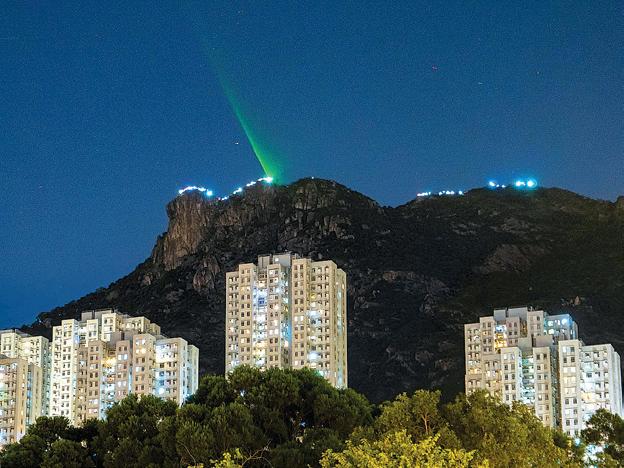
Lion Rock, Hong Kong
Studio Incendo
人生不免崎嶇 難以絕無掛慮
既是同舟 在獅子山下且共濟
拋棄區分求共對
It is inevitable for life to be rugged
or have no worries at all
Since we are in the same boat
at the foothills of Lion Rock living together
Let’s forget our differences and work together
– from the song ‘ 獅子山下 ’ ‘At the foot of Lion Rock’
Hong Kong, add oil!
In another time and place, I would definitely marvel at the ingenious layout of bricks on the road. In the stillness of the photograph, it is a somber art installation. In reality, they are about to inflict maximum damage. Compared to the conflicts that took place in the evenings after, these mini brick structures are like child’s play. The sun sets and the universities become battlegrounds, with tear gas against molotov cocktails, rubber bullets against bow and arrows. One of the universities is sealed off to force the protesters to surrender and be registered. The city and the Hong Kong diaspora watch the stand-off with bated breath. No amount of obsessive refreshing on our screens can tell us enough information. If the last places where ideas and ideals are germinated, incubated and cultivated are taken over and controlled, will this society still have a future?
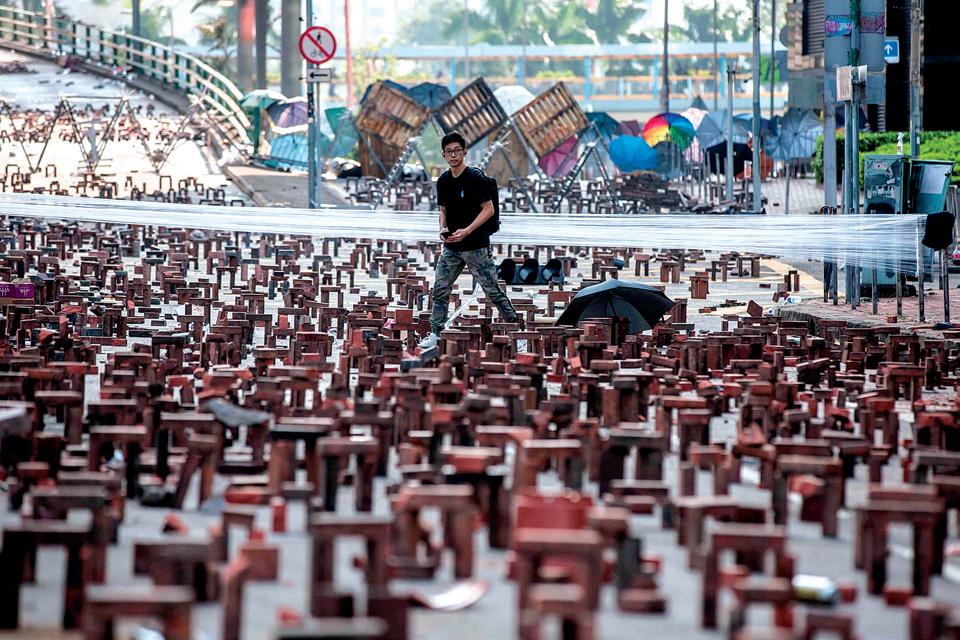
Agence France-Presse
Before we emigrated, my dad was a transportation engineer in Hong Kong. True to the engineer stereotype, he meticulously calculates, and he rarely expresses emotions.
Seven months into the protests, is the cost worth it? He can’t tell yet. But he readily tells me that he is heartbroken.
Joanne Lam OAA, M Arch, LEED AP is an architect, a sessional instructor and a mother. She is a co-founder of Picnic Design, a firm that is developing a portfolio of work that is innovative, thoughtful, adventurous and filled with ingenious moments. Her design approach is inspired by many places she has lived through out the years, but especially by her hometown of Hong Kong.










